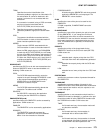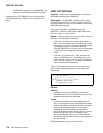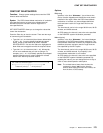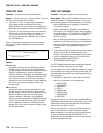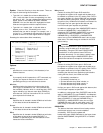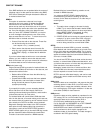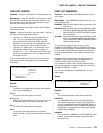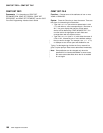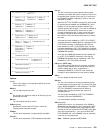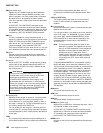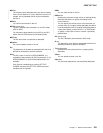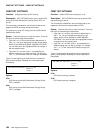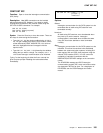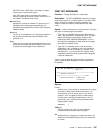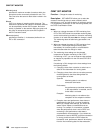
CEMT SET FILE
─ ──CEMT Set FIle ──┬ ┬──(value) ────────────────
└┘─ALl─────
─ ──┬ ┬──────────── ──┬ ┬────────── ──┬ ┬──────── ───
├ ┤─OPen─────── ├ ┤─ENabled── ├ ┤─REAd───
├ ┤─CLosed───── └ ┘─DIsabled─ └ ┘─NORead─
└ ┘─Forceclose─
─ ──┬ ┬────────── ──┬ ┬─────────── ────────────────
├ ┤─UPdate─── ├ ┤─ADdable───
└ ┘─NOUpdate─ └ ┘─NOAddable─
─ ──┬ ┬────────── ──┬ ┬────────── ─────────────────
├ ┤─BRowse─── ├ ┤─DElete───
└ ┘─NOBrowse─ └ ┘─NODelete─
─ ──┬ ┬───────────── ──┬ ┬──────────── ────────────
├ ┤─EXclusive─── ├ ┤─EMptyreq───
└ ┘─NOEXclusive─ └ ┘─NOEMptyreq─
─ ──┬ ┬─────── ──┬ ┬──────── ──┬ ┬─────────────── ───
├┤─Old─── ├ ┤─RLs──── └ ┘──DSname(value)
└ ┘─Share─ └ ┘─NOTRls─
─ ──┬ ┬─────────── ──┬ ┬──────── ──────────────────
| ├ ┤─NOTTable── ├ ┤─LOAd───
| ├ ┤─CIcstable─ └ ┘─NOLoad─
├ ┤─USertable─
| └ ┘─CFTable───
─ ──┬ ┬───────────────── ────────────────────────
| └┘──CFDtpool(value)
─ ──┬ ┬────────────────── ──┬ ┬──────────── ───────
| └┘──Tablename(value)├ ┤─COntention─
| └┘─LOCking────
─ ──┬ ┬─────────────────── ──────────────────────
└┘──Maxnumrecs(value)
─ ──┬ ┬────────────────── ───────────────────────
| └┘──Keylength(value)
─ ──┬ ┬─────────────────── ─
| └┘──RECordsize(value)
Options
(
value
)
One or more names (1-8 characters) defined in the file
control table (FCT).
ADdable
You can add records to the file.
ALl
Any change you request is made to all files that you are
authorized to access.
BRowse
You can browse records in the file.
| CFDtpool(
value
)
| specifies the name of the CFDT pool in which the
| coupling facility data table resides.
| CFtable
| The file name represents a coupling facility data table.
CIcstable
The file name represents a CICS-maintained data table.
CLosed
The file is closed; the access method does not allow
accesses to the data until the file is opened. The file can
be opened either explicitly by the user or, if the file has
the ENABLED attribute, implicitly by CICS on the next
reference to the file.
When the SET FILE CLOSED command is used, the file
is closed and also disabled (set UNENABLED). (A file
disabled in this way prevents access requests from
implicitly opening the file again.) The close is effected at
the time of the command only if there are no tasks
currently accessing the file. If there are current users,
the display indicates CLOSE requested. This means
that, when the last user finishes using the file, it effects
the close.
A file that has been disabled by a SET FILE CLOSED
command becomes enabled again by a subsequent SET
FILE OPEN command. To distinguish a file that has
been disabled by a SET FILE CLOSED from one that
has been disabled by a SET FILE DISABLED command,
the SET FILE CLOSED command closes the file with the
UNENABLED attribute.
A file with the DISABLED attribute can be enabled only
by a SET FILE ENABLED command. A file with the
UNENABLED attribute can be enabled by a SET FILE
ENABLED or SET FILE OPEN command.
| COntention (CFDT only)
| The coupling facility data table is to use the contention
| model, in which records are not locked when they are
| read for update, but an error is returned on a
| subsequent REWRITE or DELETE if the record has
| changed or been deleted since it was read for update.
DElete
You can delete records from the file.
DIsabled
The file is not available for use by transactions except
for those that are currently using it. If there are any such
users, ‘BEING DISABLED’ is also displayed. The CEMT
SET FILE DISABLED command has no effect on
existing users; it simply prevents new users from
accessing the file.
The file can be reenabled by a SET FILE ENABLED
command. (See also UNENABLED.)
It is not possible to disable a remote file.
DSname(
value
)
specifies the name (1–44 characters) of the VSAM or
BDAM data set with which this file is associated. CEMT
SET FILE(
value
) DSNAME(
value
) associates the data
set with the file and causes the FILECOUNT of the data
set to be incremented by 1. You can use CEMT SET
FILE DSNAME with a null DSNAME value to dissociate
a file from its current data set.
Note: DSNAME replaced OBJECTNAME.
Chapter 11. Master terminal CEMT 181



